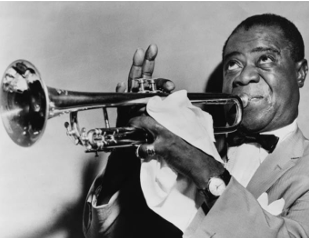Nonviolence in Fearful Times
Matthew 5:38-42
Matthew 14:13-21
Matthew 17:24-27
I would like to begin this morning with a reading from Harry Potter and the Prisoner of Azkaban. If you’d like to follow along, it begins on the bottom of page 132 or so in your pew copy, depending on your translation. [This is the scene that runs, “Now then,” said Professor Lupin….to … “forced into that vulture-topped hat, and that green dress, with that big red handbag.” I’m not going to write the whole thing out, but it runs parallel to this scene in the movie.]
Now, in preparing for this sermon, two thoughts occurred to me:
(1) I have not made a Harry Potter sermon reference since the pandemic began which, I believe, shows incredible restraint on my part
(2) the monsters in Harry Potter tend to represent the personification of a single emotion: Poltergeists represent mischief; the dementors encompass loneliness and depression; and the boggarts embody thick, unadulterated fear.
As we continue to explore the Gospel of Good Trouble, I want to explore the way fear interacts with our pursuit of good trouble. We can forget, when we see John Lewis’s casket parading through the street, having passed away peacefully at the age of 80, that good trouble is not always peaceful terrifying. John Lewis described fearing for his life during the march in Selma, as police beat protestors in an event that would later be called Bloody Sunday.
Good trouble requires us to recognize our fear—and, often, to move toward it, doing the next terrifying right thing our convictions demand of us. This week, as the election draws nearer, I am noticing more of my fear. Fear is pushing out the worry I felt a few weeks ago. I am afraid of working the polls; I am afraid of post-election violence; I am afraid of the violence and division in our country; I am afraid of living under a false democracy bent on destruction-by-capitalism.
As I struggle to build something constructive from my fear, I return to the perennial op-ed question that has dominated headlines since before the 2016 election: Is Donald Trump a shrewd, aspiring dictator with a master plan for domination—or is he an incompetent farce wreaking havoc through his incoherence?[1]
Or, for people of a certain political and cultural framework, we might ask, “Is Donald Trump Voldemort or is he a boggart?” Is he the thing we ought to fear, or is he an illusion of fear that grows strong because we hold our fear so tightly?
Then again, perhaps the difference is semantic. The way to defeat Voldemort is with love; the way to defeat a boggart is laughter.
But, given that this is still an open and hotly debated question, it seems worthwhile to spend some time considering how we respond to boggarts.
In the third-year class’s encounter with the boggart, we find a parable about fear. They are destroyed when laughter overwhelms fear. What Professor Lupin teaches the class is that fear is not destroyed; it is transformed by our ability to imagine something different. And that process of transforming fear to violence—Professor Lupin doesn’t quite say this, but only because, I think, he was raised in the Church of England and never encountered Anabaptism—is creative nonviolence.[2]
We are in a time of overwhelming fear, and we have a moral imperative to figure out how to dress Trump in the attire of Neville’s grandma, in our imaginations if not literally. This is not an act of satire, which names what exists, but an act of nonviolence, which names what is possible and, for a moment, causes it to exist.
If Lupin cannot quite build this frame for us, we know another teacher who can: Jesus.
While Jesus did not bring a boggart to the Sermon on the Mount, he tells some powerful stories of dispelling fear with imagination. As Nelson read for us this morning, Jesus offers these three examples that disrupt violence—not an eye for an eye, not trading fear for fear, but taking the wind out of our fear by surprising it and, as Harry observed, confronting it in community.
These three scenarios Jesus names—to turn the other cheek, give away your coat, and to walk the second mile—these are not shows of generosity but performative resistance, just as Ezekiel made when he cooked his famous bread over a dung fire.
We can recall Walter Wink’s interpretation: to offer the left cheek also—that is, in a right-handed world, when someone gives you a backhand slap in a show superiority—is to insist on dignity. If they wish to insult you, they must treat you as an equal. It is a disruption of the caste system.
To give away your coat when a lender sues you for not paying an inflated loan is to strip naked before your debtor—and nakedness was taboo, not for the one who was naked, but for the one viewing the naked. It is a shame on a shameless lender.
To walk a second mile is to violate the Roman law that soldiers can only require civilians to carry their heavy packs for one mile. To go a second mile is to expose an unjust law—to put the solider in the position of begging a peasant to give him back his possessions.
Walter Wink concludes, “Jesus in effect is sponsoring clowning.”[3]
Jesus implores us to place a silly vulture hat on the rearing head of fear.
Wink distills the instructions: “Seize the moral initiative. Find a creative alternative to violence. Assert your own humanity and dignity as a person. Meet force with ridicule or humor. Break the cycle of humiliation.”[4]
This is what it means to practice creative nonviolence.
Even as pacifists, we are rusty and unpracticed in our creative nonviolence.
(I want to acknowledge there is a separate, related question here. Most of us have spent our lives at a distance from violence, declaring our commitment to peace. And yet our immediate lives have been more threatened by violence, particularly gun violence. We wonder: Ought we to invest more in securing our homes? Purchasing guns? Learning, at least, to shoot? These are real questions we must wrestle with. There is a very real conversation we need to have, as a church, about how we adapt our principles in an increasingly violent country. But this morning, I want to focus on creative nonviolence in the face of systemic violence.)[5] Because wherever there is a boggart, there is a green dress and a floppy red handbag.
I think of the John McCutchen song Paul sometimes performs at the pageant, “Christmas in the Trenches.” Even in the midst of war, there are glimmers of moments when a community—in fact, a collection of soldiers—can expose the absurdity of violence.
Or a story I read recently about Robert Desnos, a surrealist poet who found himself in the back of a pick up truck on the way to a Nazi gas chamber, who, as the Nazi soldiers unloaded the truck, pushed his way forward and began to read the palms of the prisoners around him, reading in their palms long lives, marriages, grandchildren, until even the Nazis were so stunned that they packed up the truck and returned to the camp.
Or the story the lawyer Bryan Stevenson tells, when he was defending a teenager who, a judge decided, could be tried as an adult. Furious at the prospect that the judge has the power to turn a child into an adult, Stevenson decided the judge must have all kinds of power to change the identity of his client. So he wrote a motion to try the 14-year-old poor, Black male client as a privileged, white 75-year-old corporate executive, forcing the judge to grant a hearing on the motion.[6]
Or Alice Walker’s poem, “Once,” and the teen who thought to expose the absurdity of segregation by going to the beach nude.
Or the example Walter Wink himself gives, or a group of peasants in Brazil who were organizing against resource exploitation by international firms. When several of their members were arrested, the town decided they were all equally responsible, and hundreds of them marched to the house of the judge, demanding to be jailed, until the judge was forced to release the prisoner in order to get them to go home.
And then there are the examples Jesus gives us.
The feeding of the 5000 is in direct response to an act of violence: the beheading of John the Baptist. His response is to expose the foolishness of violence. One prominent critic is murdered; and 5000 families emerge that do not need the Empire to provide its safety or security.
When Peter pulls the coin out of the fish’s mouth for the Temple tax, it’s not just an elaborate sidestep of IRS policy. Jesus implies that the fish, too, are residents of the Empire—foreign ones—and that any tax borne by the people is borne by the animals in their midst, too. It is as absurd to expect people to pay the Temple tax as it is to expect a fish to carry coins everywhere.
None of these individual incidents solve systemic violence.
- After the Christmas soccer game, the soldiers
returned to their sides and got ready for another day shooting and gassing each
other.
- Robert Desnos died in the camps.
- Bryan Stevenson’s motion was denied by the court.
- Alice Walker’s poem appears to be a dream that was never fulfilled.
- The Brazilian peasants did not guarantee their land.
But all of these actions expose the absurdity, change the perspective and the terms of the negotiation. Even when we cannot orchestrate systemic change, we are called to expose it and make fools of our collective participation in it.
What does this mean for us? Are we called to dress up in our Halloween costumes when we go to vote in person? To build elaborate model castles out of canned food and invite passersby to take what they need? To, when we see a cop pull over a Black driver, stop our cars and tell the officer, “I just wanted to make sure you know my headlight is out, would you like to give me a ticket?” Are we called to build a life-size replica of a U-M dorm on the quad and offer it to President Mark Schissel in case he needs to quarantine? In what ways to we have daily opportunities to expose the absurdity of our violent systems?
You cannot destroy a boggart, only send it to another dark corner. In the days ahead, let us look at our fear, when it roars out of closets, and dress it in absurdity. Let us be a force to make violence look foolish and out-of-place in this world.
It is hard to say exactly what that
look like for each of us, in our workplaces and our communities. Perhaps we
will be the ones exposed by others with less power. If so, may we embrace it.
May we recognize the absurdity of the systems our fear builds. Let us, like
Jesus, like Professor Lupin, seek not to eliminate our fear, but to transform
it.
[1] As examined recently in “There Will be No Trump Coup,” a New York Times Opinon piece by Ross Douthat, see https://www.nytimes.com/2020/10/10/opinion/sunday/trump-election-authoritarianism.html.
[2] No offense to my Anglican siblings; Lupin clearly has a much stronger liturgical framework than Anabaptist wizards.
[3] Wink, “Jesus and Alinsky,” in The Impossible Will Take a Little While, p.185.
[4] idib.
[5] This section was omitted in the sermon presentation.
[6] https://www.ted.com/talks/bryan_stevenson_we_need_to_talk_about_an_injustice?language=en.


0 Comments